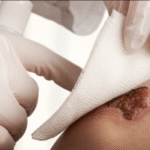Orthodontists are dentists who specialise in treating dental and facial malalignments. Orthodontists have command over the diagnosis and treatment of teeth and jawbone irregularities. They help patients regain a confident smile while maintaining good oral health. Orthodontists can perform comprehensive procedures such as fixed and removable orthodontic treatment, provide orthodontic appliances, jaw expansion treatment and in severe jaw malalignment they also perform orthognathic surgeries, in case of emergency, an orthodontist is available in emergency dentist London. They play an important role in preventing dental complications due to teeth and jawbone abnormalities. Specific dental conditions that can only treated by orthodontics.
What Specific Dental Conditions or Issues Do Orthodontists Specialise in Treating?
Malocclusion
Malocclusion is when upper and lower teeth are in an abnormal position, causing crossbite, open bite, and underbite and leading to functional and aesthetic problems. Orthodontists can correct malocclusion with the help of comprehensive orthodontic treatment.
Malignment
Orthodontists or emergency dentist London can correct maligned teeth such as teeth crowding due to insufficient space in the jawbone, with the help of jaw expansion techniques. Spaces between the teeth are reduced with the help of fixed braces.
Dental and Facial Protrusion/Retrusion
Dental and facial protrusion and retrusion are the abnormal relations of the upper and lower jaw bones. The protrusion is the extension of the upper jaw compared to the lower jaw. In retrusion, the lower jaw grows more outward compared to the upper jaw. These abnormalities affect facial aesthetics, orthodontists can correct these issues with the help of functional appliances, and fixed braces in severe conditions orthognathic surgery (jaw surgery) may be required to resolve these issues.
Dental Midline Discrepancies
Dental midline discrepancy can cause smile asymmetry, for a perfect smile orthodontists resolve this issue with the fixed orthodontic treatment in which light continuous force is applied to align the teeth in a symmetrical position. Facial asymmetry can be resolved with orthognathic surgery.
Dental and Skeleton Crossbite
In Crossbite upper and lower teeth do not coincide properly due to dental or jaw over or undergrowth. Dental crossbite can be corrected with fixed orthodontic treatment, skeleton or jawbone crossbite requires orthognathic surgery.
Impacted Tooth
Impacted teeth are the teeth that fail to erupt and cause spaces in the dental arch that affect oral function and aesthetics. Orthodontists guide the impacted tooth to erupt in the correct position with the help of fixed braces and orthodontic appliances.
Temporomandibular Joint Disorder
Orthodontics can diagnose and treat temporomandibular joint disorders. Malign teeth and night grinding can cause TMJ joint pain, clicking sound and difficulty in jaw movement. Orthodontists treat TMJ disorder with fixed braces to align teeth and provide functional appliances such as night guards to control TMJ problems.
Parafunctional Habit
Parafunction habits disturb the teeth’ alignment. Night grinding, thumb sucking, and tongue trashing can cause overjet, crossbite, open bite and wear teeth surface. it affects oral function and aesthetics. Orthodontists design habit breakers or functional appliances to resolve these problems.
Preventive Orthodontic Treatment
Orthodontists contribute an important in maintaining good oral health. Maligned teeth can affect gum health, and cause gum infection, bone resorption, and the teeth mobility. Crowded teeth can cause food accumulation and lead to tooth decay, The Temporomandibular joint is also affected by malign teeth. Early orthodontist visits can prevent all these conditions, with the help of a space maintainer and other orthodontic appliances orthodontists guide teeth to erupt in an aligned position and maintain good overall oral health.
What is the Ideal Age for Orthodontist Consultation?
There is no age limitation or restriction for orthodontist consultation. Orthodontic treatment depends upon individual dental needs, case severity, growth pattern and oral health. Early diagnoses of orthodontic problems help orthodontists to take early intervention to prevent complications. Orthodontic treatment is divided into three groups based on age.
Early-age Orthodontic Treatment
7 to 11 years is the early age orthodontic treatment, this group is also known as mixed dentition due to both permanent and temporary teeth being present, jawbones are also in the developing phase, so it is easy for orthodontists to resolve misalignments such as crowding, spacing and jaw discrepancy with the help of interceptive orthodontic treatment. With the help of functional appliances, orthodontists modify jaw development and perform arch expansion treatment to correct teeth crowding and maintain space with the help of a space maintainer in case of early tooth shedding.
Teenager orthodontic treatment
In the 11 to 17 years age group, orthodontists use comprehensive dental treatment at this stage all the permanent teeth have erupted, and jaw development is still in process. Orthodontists can use clear aligners or fixed braces to correct dental crowding, cross-bite, overjet and underbite.
Adult Orthodontic Treatment
Adult orthodontic treatment from 18 years to older age. Orthodontic treatment can correct functional and aesthetic problems with the help of advanced discrete options such as clear aligner braces, and ceramic braces that correct smile without compromising aesthetics during the treatment.
What are the Benefits of Seeking Treatment from an Orthodontist?
Orthodontists are specialised in crafting perfect and healthy smiles. Orthodontists carefully diagnose all the conditions and customise treatment plans to provide aesthetically pleasing smiles. Other benefits are:
Specialist Treatment: Orthodontists have the expertise and vast experience in resolving functional and aesthetic dental problems.
Comprehensive Treatment Options: orthodontists can provide treatment options according to individual dental needs.
No Treatment Age Limitation: Orthodontists can restore the perfect smile in all ages of patients from children to adults.
Using Advanced Technology: Orthodontists trained in advanced dental technology and efficiently resolve functional and aesthetic dental issues.
Maintain Good Oral Health: Orthodontists correct smile with good oral health, they regularly monitor jaw and gums health to provide a long-term healthy smile.
Conclusion
The key role and responsibility of orthodontists is to resolve dental and jawbone abnormality and restore patient’s dental aesthetics and function with good oral health. Orthodontists have expertise in providing comprehensive dental treatment for all ages of patients. Orthodontist consultation at an early age can prevent dental complications with interceptive orthodontic treatment.














